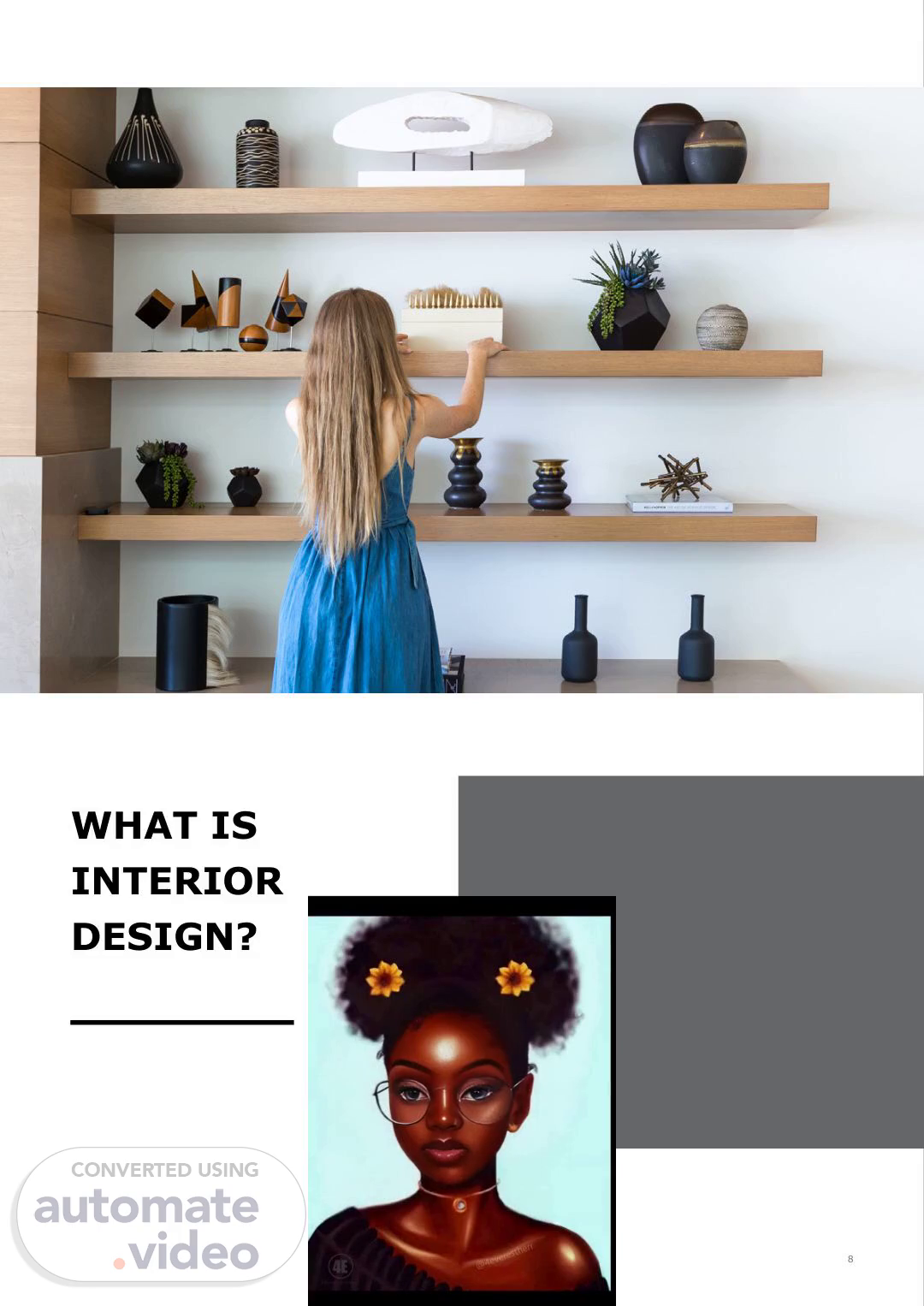Scene 1 (0s)
VERSION 2:8 - JAN 2025 – COPYRIGHT © ONLINE EDUCATION ALL RIGHTS RESERVED V I S U A L L A N G U A G E O F I N T E R I O R D E S I G N 8 WHAT IS INTERIOR DESIGN?.
Scene 2 (20s)
[Audio] Interior design is the art and craft of creating beautiful and functional environments. Just being in it is an unforgettable experience. You know it's great because it just feels right. The most masterful designs use materials with an understanding of both tradition and originality. Interior design has a long and rich history. Once understood, the rules of design can either be followed or broken with ease and awareness. Every interior space, regardless of its function, provides an opportunity for creating a well-designed environment. It can be a quiet and contemplative place full of natural light or a hot and sexy nightspot full of people. The sounds of moving across certain kinds of floor surfaces; the way the air smells infused with the scent of flowers or the aroma of leather; the way the light falls on angles or objects; how certain surfaces feel to the touch; how balanced the space looks, even if it is a surprising combination of objects..
Scene 3 (1m 21s)
[Audio] Interior design is the process of creating harmony in a space by combining multiple senses, including smell, touch, hearing, and sight. This harmony allows users to meet their needs consciously or unconsciously as they move through the space. With good design planning, a space can evoke emotions such as feeling light-hearted, sleepy, or in awe. Properly understanding design enables individuals to create a home or workspace that reflects their lifestyle and inspires them to work efficiently, sleep well, or feel organized. As technology advances, people's expectations about the functionality of their home also grow..
Scene 4 (2m 15s)
[Audio] The demands for expert interior design are increasing across all sectors, including residential, commercial, and public spaces. People's expectations about their interior environments are rising due to advancements in technology and changing lifestyles. Residential spaces now require sophisticated kitchens, media rooms, smart home offices, and advanced security systems. Commercial spaces aim to boost sales and customer satisfaction through carefully designed layouts. Even hospitals recognize the importance of uplifting color schemes to promote positivity and energy. As designers, it is crucial to understand human psychology and instinctive responses to create effective and harmonious spaces..
Scene 5 (3m 10s)
[Audio] Design is a universal language that transcends cultural boundaries. By mastering its techniques, designers can effectively communicate their message across diverse audiences. When planning a design project, it's essential to decide what message you want to convey and how to express it within the space. This involves considering the various elements that contribute to the overall aesthetic and functionality of the environment. With this understanding, designers can create spaces that inspire and engage users, regardless of their background or culture..
Scene 6 (3m 54s)
[Audio] The configuration of doors, windows, finishes, and window treatments communicates the design style of a dwelling, reflecting the feelings and activities the residents desire to experience within their home. Understanding the array of design tools available and knowing how to apply them effectively is crucial to achieving one's vision. As we embark on this journey to explore the fundamental elements of residential design, we'll discover how these elements interact and influence each other, ultimately shaping the space and its occupants. By recognizing the presence of these elements, our observation of existing designs will become more nuanced, allowing us to appreciate the intricacies of successful spaces..
Scene 7 (4m 45s)
[Audio] The quotes we love remind us that design is not just about aesthetics, but about functionality, purpose, and the connection between form and function. They inspire us to create spaces that are not only visually appealing, but also meaningful and effective. As designers, we strive to bring these principles to life, using the visual language of interior design to communicate our vision and create environments that resonate with those who inhabit them..
